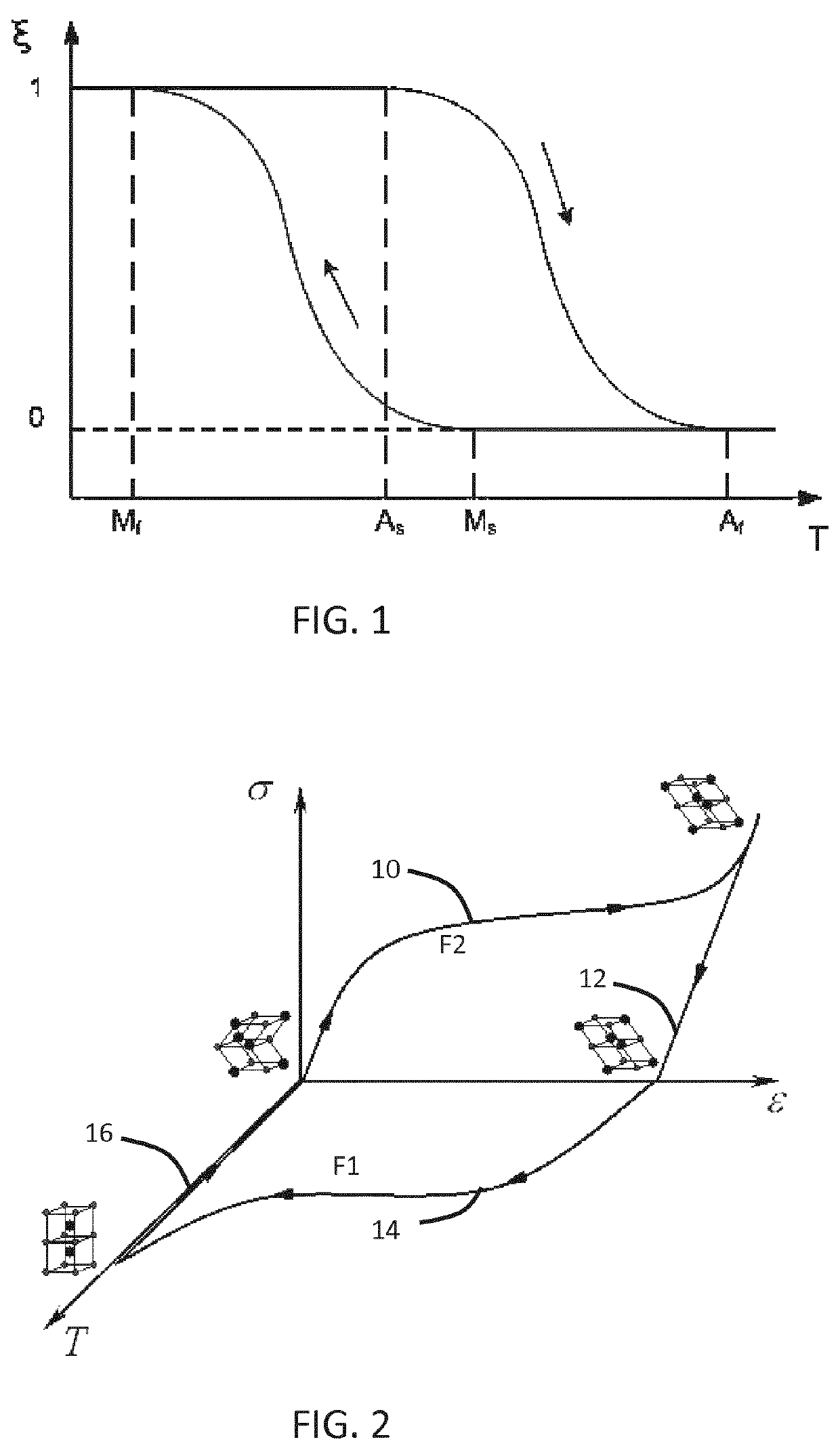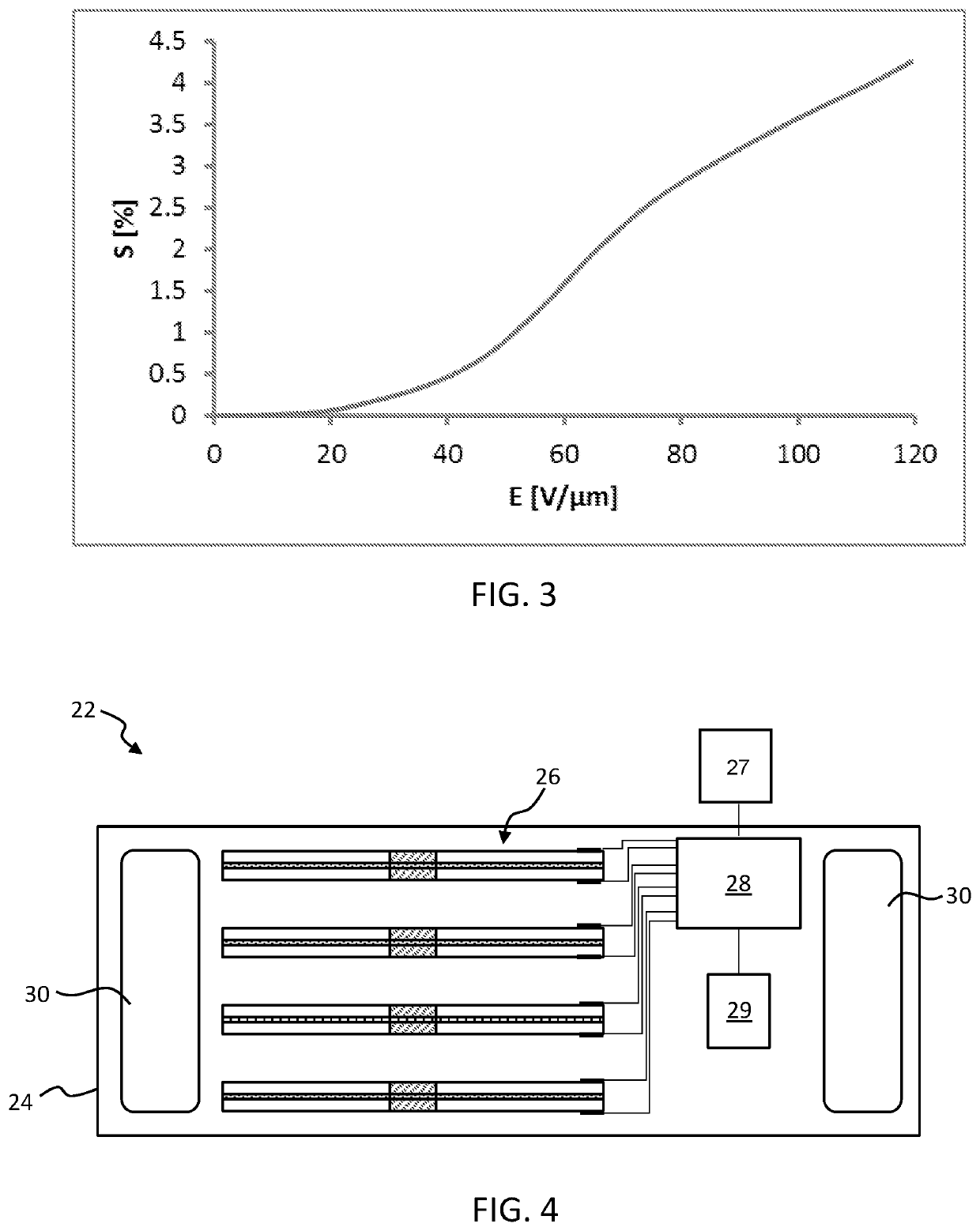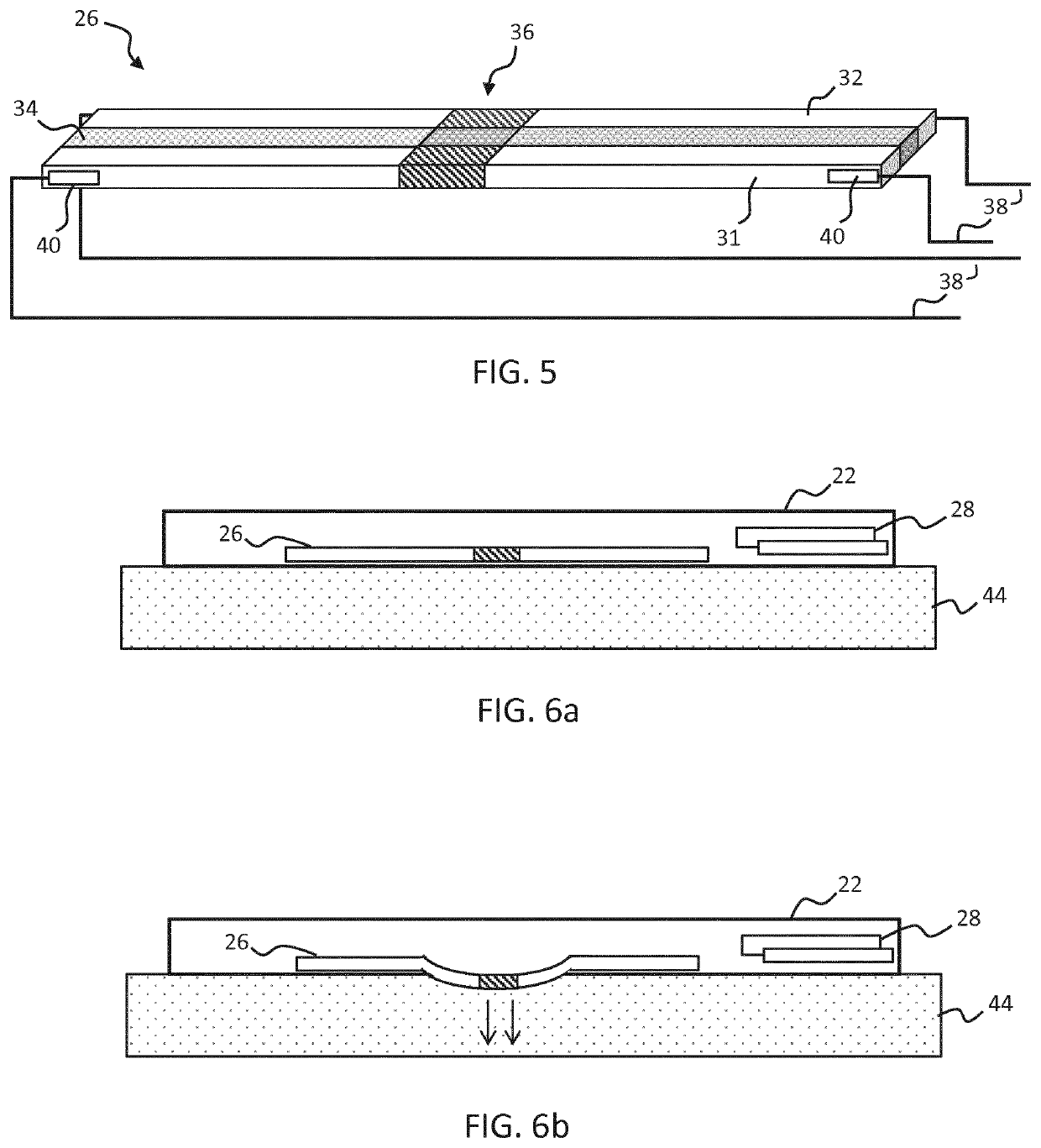Acupressure device
a technology of acupressure device and acupressure chamber, which is applied in the field of acupressure device, can solve the problems of not always practical or affordable to visit a trained therapist, inconvenient and cost-effective, and particularly significant problems in china
- Summary
- Abstract
- Description
- Claims
- Application Information
AI Technical Summary
Benefits of technology
Problems solved by technology
Method used
Image
Examples
Embodiment Construction
[0080]The invention provides a health device for automatically administering skin pressure-based therapies to a user, and a method for the same. The device comprises one or more actuator members, each comprising a smart shape changing material of a class which is disposed to change shape in response to a change in temperature or to the application of an electrical stimulus. The actuator members are controlled by a controller to apply pressure to one or more points on a user's skin.
[0081]The invention is based upon the incorporation of smart shape-changing material technology within an automated acupressure device, in order to provide a device capable of administering significant pressure to one or more points on a user's body in a time-varied fashion without incurring the large and bulky form factor of traditional mechatronic-based actuation components (such as electronic motors).
[0082]There are many varieties of smart shape-changing material, and their development has accelerated r...
PUM
 Login to View More
Login to View More Abstract
Description
Claims
Application Information
 Login to View More
Login to View More - R&D Engineer
- R&D Manager
- IP Professional
- Industry Leading Data Capabilities
- Powerful AI technology
- Patent DNA Extraction
Browse by: Latest US Patents, China's latest patents, Technical Efficacy Thesaurus, Application Domain, Technology Topic, Popular Technical Reports.
© 2024 PatSnap. All rights reserved.Legal|Privacy policy|Modern Slavery Act Transparency Statement|Sitemap|About US| Contact US: help@patsnap.com










